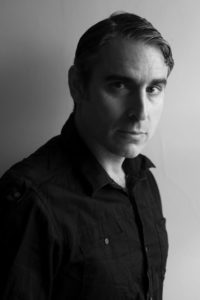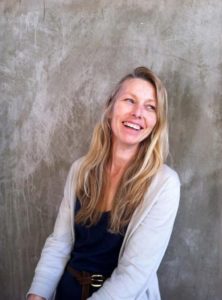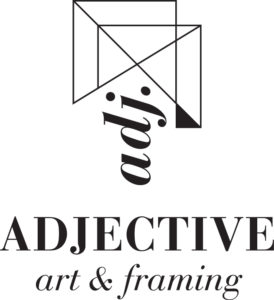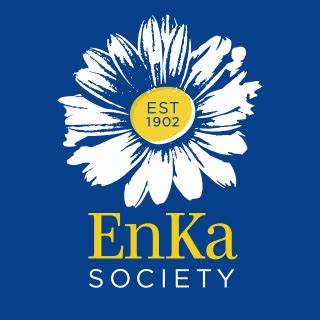DoubleTake is co-curated by Elin Spring and Suzanne Révy of What Will You Remember. The photographers included are: Karl Baden, Yorgos Efthymiadis, Bill Franson, Jackie Heitchue, Michael Joseph, Molly Lamb, Alysia Macaulay, Iaritza Menjivar, Eric Nichols, Astrid Reischwitz, Gail Samuelson and Joshua Sarinana.
“What happens when you put two photographs together? Combining individual images creates stories, both those intended by the artist and those imagined by the viewer. When pictures are juxtaposed or layered, elements like shape, color and contrast can reveal unexpected and thought-provoking relationships. The plot thickens as tantalizing dialogs spring up between compositions. In this exhibit, twelve artists have commingled imagery in a variety of photographic genres and moods that suggest more than one meaning. We invite you to do your own double take!” – ES and SR


 Jess T. Dugan is an artist whose work explores issues of identity, gender, sexuality, and community through photographic portraiture. She holds an MFA in photography from Columbia College Chicago, a Master of Liberal Arts in museum studies from Harvard University, and a BFA in photography from the Massachusetts College of Art and Design.
Jess T. Dugan is an artist whose work explores issues of identity, gender, sexuality, and community through photographic portraiture. She holds an MFA in photography from Columbia College Chicago, a Master of Liberal Arts in museum studies from Harvard University, and a BFA in photography from the Massachusetts College of Art and Design. Cheryle St. Onge, a 2009 Guggenheim Fellow, is the only child of a painter and a physicist. Her work explores the curiosities of how art and science intersect. She received a BFA from Clark University and an MFA from Massachusetts College of Art, where she began working with an 8 x 10 inch view camera. In 1998 after the birth of her third child, she began, Natural Findings, a body of work that examines the familial nature of our innate ties to the natural world. St. Onge’s work has been widely exhibited and is in numerous collections Portland Museum of Art, Portland OR, Museum of Fine Arts, Houston, TX and The University of New Mexico Art Museum, Albuquerque, NM. She is the recipient of multiple fellowships and grants. In 2016 her photographs were included in Fraction of a Second, co-published by Radius, Fraction Magazine, 516 ARTS, and UNM Art Museum.She lives in New Hampshire and summers aboard a boat off the coast of Maine with her family.
Cheryle St. Onge, a 2009 Guggenheim Fellow, is the only child of a painter and a physicist. Her work explores the curiosities of how art and science intersect. She received a BFA from Clark University and an MFA from Massachusetts College of Art, where she began working with an 8 x 10 inch view camera. In 1998 after the birth of her third child, she began, Natural Findings, a body of work that examines the familial nature of our innate ties to the natural world. St. Onge’s work has been widely exhibited and is in numerous collections Portland Museum of Art, Portland OR, Museum of Fine Arts, Houston, TX and The University of New Mexico Art Museum, Albuquerque, NM. She is the recipient of multiple fellowships and grants. In 2016 her photographs were included in Fraction of a Second, co-published by Radius, Fraction Magazine, 516 ARTS, and UNM Art Museum.She lives in New Hampshire and summers aboard a boat off the coast of Maine with her family. Bryan Thomas is a Brooklyn-based photographer and a recent recipient of The Magenta Foundation’s Flash Forward Award. Bryan graduated from Dartmouth College and worked at GQ Magazine before returning to graduate school and earning his Master of Arts at Ohio University’s School of Visual Communication. His self-published zine “The Sea in the Darkness Calls,” is held in the libraries of the San Francisco Museum of Modern Art, the Amon Carter Museum of American Art, and the Museum of Fine Arts Houston and, in 2017, the work was recognized by Corey Keller, Curator of Photography at the San Francisco Museum of Modern Art, in CENTER’s Curator’s Choice awards. His work has also been recognized by PDN’s Photo Annual, American Photography, and the NPPA’s Best of Photojournalism as well as exhibited at the Aperture Gallery (NYC), The Museum of The City of New York (NYC), and The Getty Images Gallery (London). Bryan is a regular contributor to The New York Times and has been published by The New Yorker, TIME, Harper’s Magazine, Bloomberg Businessweek, Topic.com, Newsweek, The Wall Street Journal, CNN, National Public Radio (NPR), Frontline (PBS), and Harper Collins, among others.
Bryan Thomas is a Brooklyn-based photographer and a recent recipient of The Magenta Foundation’s Flash Forward Award. Bryan graduated from Dartmouth College and worked at GQ Magazine before returning to graduate school and earning his Master of Arts at Ohio University’s School of Visual Communication. His self-published zine “The Sea in the Darkness Calls,” is held in the libraries of the San Francisco Museum of Modern Art, the Amon Carter Museum of American Art, and the Museum of Fine Arts Houston and, in 2017, the work was recognized by Corey Keller, Curator of Photography at the San Francisco Museum of Modern Art, in CENTER’s Curator’s Choice awards. His work has also been recognized by PDN’s Photo Annual, American Photography, and the NPPA’s Best of Photojournalism as well as exhibited at the Aperture Gallery (NYC), The Museum of The City of New York (NYC), and The Getty Images Gallery (London). Bryan is a regular contributor to The New York Times and has been published by The New Yorker, TIME, Harper’s Magazine, Bloomberg Businessweek, Topic.com, Newsweek, The Wall Street Journal, CNN, National Public Radio (NPR), Frontline (PBS), and Harper Collins, among others.  Arnold Newman began his relationship with Maine in the late 1970’s, traveling from his home in New York City each summer to join a host of other renowned photographers in Rockport, who were teaching at the Maine Photographic Workshops, now known as Maine Media Workshops. For Arnold, Maine was a place of inspiration and rejuvenation and the Workshops a place to see old friends, be immersed in photography and share his work and experiences through teaching. He never came to Maine for just his workshop; it was always a longer stay. For more than thirty years, Arnold and his wife Augusta were vital influences among the Workshops community.
Arnold Newman began his relationship with Maine in the late 1970’s, traveling from his home in New York City each summer to join a host of other renowned photographers in Rockport, who were teaching at the Maine Photographic Workshops, now known as Maine Media Workshops. For Arnold, Maine was a place of inspiration and rejuvenation and the Workshops a place to see old friends, be immersed in photography and share his work and experiences through teaching. He never came to Maine for just his workshop; it was always a longer stay. For more than thirty years, Arnold and his wife Augusta were vital influences among the Workshops community.










